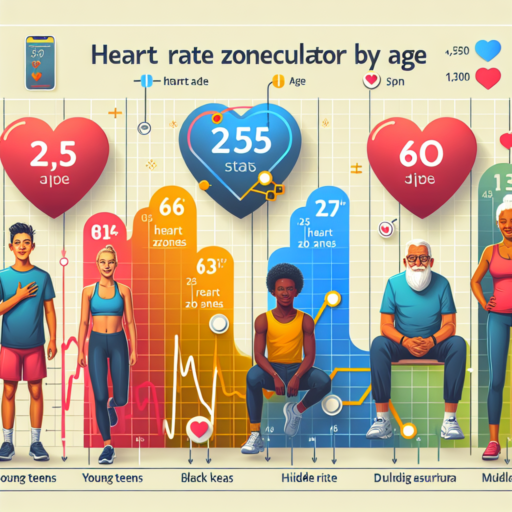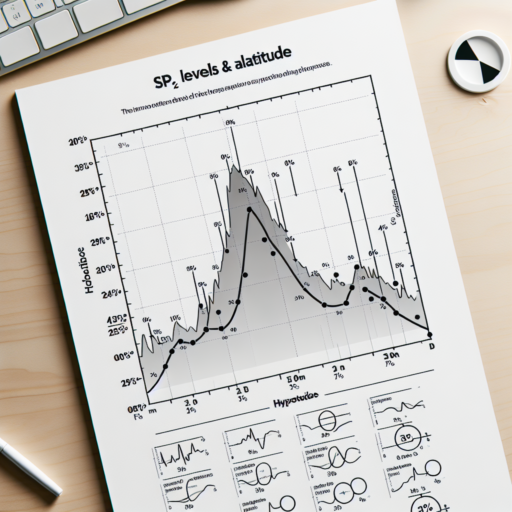What are my heart rate zones for my age?
Understanding your heart rate zones is crucial for optimizing your workouts, ensuring you’re exercising within a safe and effective range. Your heart rate zones vary by age, as they are typically calculated based on your maximum heart rate (MHR), which changes as you age. The most common formula for estimating your MHR is 220 minus your age. This figure then helps determine your heart rate zones, each corresponding to a specific percentage of your MHR, designed to achieve different fitness goals, from fat burning to improving aerobic capacity.
Calculating Your Heart Rate Zones
Once you’ve estimated your MHR, you can calculate your heart rate zones. These zones are generally divided into five categories:
- Zone 1 (50-60% of MHR): This is the very light intensity zone, ideal for warming up and cooling down.
- Zone 2 (60-70% of MHR): Known as the fat-burning zone, working out in this zone helps improve basic endurance and fat burning.
- Zone 3 (70-80% of MHR): This is the aerobic zone, enhancing cardiovascular fitness and muscle strength.
- Zone 4 (80-90% of MHR): This anaerobic zone improves your VO2 max and speeds up your pace.
- Zone 5 (90-100% of MHR): The maximum effort zone, improving speed endurance for short bursts of high-intensity exercise.
It’s important to note that these zones are not rigid boundaries but rather broad ranges. The exact percentages can vary depending on your fitness level, goals, and the specific method used for calculation. Additionally, some fitness experts suggest fine-tuning these zones further with lactate threshold testing or a stress test under the supervision of a professional, especially for serious athletes or those with health concerns.
No se han encontrado productos.
What should your target heart rate be at your age?
Understanding your target heart rate is essential for maximizing the benefits of exercise without overstraining your heart. It varies not just with age but also with one’s physical condition and fitness goals. Generally, the American Heart Association suggests that your target heart rate during moderate-intensity activities should be about 50% to 70% of your maximum heart rate. For vigorous activity, aiming for 70% to 85% of your maximum heart rate is recommended.
To determine your maximum heart rate, the general formula of subtracting your age from 220 can be used. For example, a 30-year-old would have a maximum heart rate of approximately 190 beats per minute (bpm). Therefore, for moderate exercise, the target would be between 95 and 133 bpm. It’s a straightforward way to ensure you’re exercising within a safe and effective zone tailored to your age group.
Factors Influencing Target Heart Rate
- Age: As mentioned, age is a primary factor in determining your target heart rate. As you grow older, your heart rate targets will adjust accordingly.
- Fitness Level: Individuals with higher levels of fitness often have a lower resting heart rate, which influences their target heart rate zones.
- Health Status: Existing health conditions and medications can also significantly affect your heart rate zones. It’s important to consult with a healthcare provider for personalized advice.
Is 220 minus your age accurate?
The formula «220 minus your age» has long been a staple in estimating the maximum heart rate (MHR) for individuals engaging in exercise. This method is quick, requiring only a simple subtraction, but how accurate is it in reality? It’s crucial to underscore that relying on this method offers a broad approximation rather than precision. Individual differences in fitness levels, health status, and genetic factors mean that the true MHR can vary significantly from what the formula suggests.
Studies have shown a considerable variance in the MHR among individuals of the same age, leading to questions regarding the formula’s universal applicability. This has encouraged fitness professionals and researchers to supplement or replace the «220 minus your age» equation with more individualized assessments. Techniques like stress testing under professional supervision or employing formulas that take into account sex and age are gaining traction for their enhanced accuracy.
Moreover, the practical application of the MHR in training regimes highlights another layer of complexity. Even if the «220 minus your age» formula provides an estimate close to an individual’s true MHR, the optimal heart rate zones for different types of training vary. Thus, understanding and applying heart rate zones effectively requires a nuanced approach beyond basic formulas. The engagement of a fitness professional or the use of advanced fitness trackers that analyze heart rate variability and other indicators can offer more personalized guidance for achieving fitness goals safely and effectively.
What is a good heart rate by age?
Understanding the ideal heart rate by age is essential in monitoring cardiovascular health. As you age, your heart rate can offer vital clues about your heart’s efficiency and general health status. It’s important to note that a «good» heart rate can vary significantly as one progresses through different stages of life.
For infants, a normal resting heart rate ranges from 100 to 160 beats per minute (bpm). This rate tends to decrease as children grow, settling into a range of about 70 to 100 bpm in adulthood. However, for seniors, the heart might operate at a slightly higher rate, reflecting changes in heart muscle strength and cardiovascular system efficiency.
Factors Influencing Heart Rate
Several factors can influence an individual’s heart rate, including activity level, emotions, medication use, and overall health. Engaging in regular physical exercise can lead to a lower resting heart rate, as the heart becomes more efficient in pumping blood throughout the body. Conversely, stress or anxiety can temporarily increase the heart rate. Understanding these influences can help in assessing whether one’s heart rate falls within a healthy range for their age group.
Athletes and Heart Rate
It’s also noteworthy that athletes often have a lower resting heart rate than non-athletes. This condition, known as bradycardia, is a result of the heart’s increased efficiency due to regular, intense exercise. For instance, it’s not uncommon for elite athletes to have resting heart rates as low as 40 to 60 bpm, reflecting their high cardiovascular fitness.




